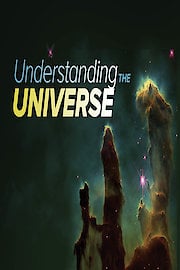































































































In 96 richly illustrated half-hour lectures you will survey the main concepts, methods, and discoveries in astronomy—from the constellations drawn by the ancients, to the latest reports from planetary probes in our Solar System and the most recent images offered by telescopes probing the farthest frontiers of space and time.
Understanding the Universe: An Introduction to Astronomy, 2nd Edition is a series that ran for 1 seasons (95 episodes) between October 19, 2023 and on The Great Courses
-
Channel
-
Premiere DateOctober 19, 2023

-
 Watch thousands of shows and movies
Watch thousands of shows and movies
-
 All the TV You Love
All the TV You Love
-
 Watch Anytime, Anywhere
Watch Anytime, Anywhere

 Watch thousands of shows and movies
Watch thousands of shows and movies
 All the TV You Love
All the TV You Love
 Watch Anytime, Anywhere
Watch Anytime, Anywhere
































